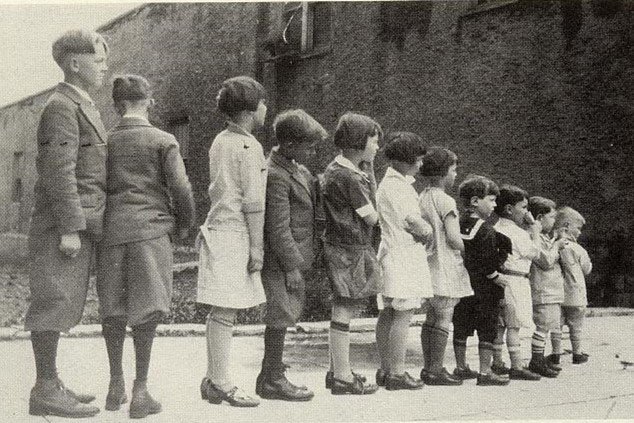A Look Back at the Social Security Act of 1935 and Its Forgotten Focus on Needy Children
By Katharine B. Stevens
ARTICLE
August 13, 2015
Eighty years ago, Franklin D. Roosevelt signed the 37-page Social Security Act (SSA) of 1935 into law, enacting the most fundamental change in social policy in America’s history. But what we now know as “Social Security” was only one of several titles of the 1935 Act, which included multiple programs “for helping people who are unable to help themselves.” Title IV, Aid to Dependent Children (ADC), is one of these. Largely forgotten, but a significant part of the original legislation, it reflects an important period of unprecedented national focus on the well-being of poor children. Responding to dramatic changes in America’s social and economic landscape, ADC aimed to promote children’s healthy development by enabling widowed and abandoned poor women to remain at home to raise their children, giving children “a chance to live normal, wholesome lives in their own homes.”
The SSA of 1935 was enacted in the context of America’s transformation from a small agrarian society to an urban, industrial nation. From 1800 to 1930, the country’s population grew from 5.3 million to 123 million, becoming overwhelmingly urban: while in 1800, just 6 percent of Americans lived in cities, by 1930 that number reached 56 percent. As late as 1870 over half of working Americans worked on farms, but by 1930 it was just one in five. The impact of these huge shifts on family life and the upbringing of children was profound, seen at the time as jeopardizing the very foundation of the nation’s future.
While the rapid shift from an agrarian to an industrial society was tough for many adults, it was especially hard on children. In pre-industrial America, children were raised from infancy into late childhood by ever-present mothers whose work was in the farmhouse and on the land. In an urban, industrialized society, however, mothers without a male breadwinner had to earn a living as employees outside the home, leaving children without the early nurture and care necessary to their healthy development. Poor children were sent to rapidly-growing orphanages, put to work in factories and other city jobs, or simply left to make it on their own.
In response to growing public concern over child well-being, President Theodore Roosevelt convened the first White House Conference on the Care of Dependent Children in 1909. The interests of the country were at stake, he stressed in a letter to Congress, because each child “represents either a potential addition to the productive capacity and the enlightened citizenship of the Nation, or, if allowed to suffer from neglect, a potential addition to the destructive forces of the community.” Roosevelt especially emphasized the importance of early nurture and care to the well-being of America’s youngest citizens, writing: “Home life is the highest and finest product of civilization.”
The 1909 conference sparked a national movement, promoting provision of “mothers aid” to poor mothers who were “deprived of the support of the natural breadwinner” through his death or abandonment so they could stay at home to raise their children as they had done for centuries. As a 1916 Pennsylvania circular promoting mothers aid put it: “‘[H]omemade children,’ cared for by their own mothers, have the best chance of becoming healthy, normal citizens.” By 1926, mothers aid legislation had been adopted in 42 states, Alaska, and Hawaii, reflecting widespread public worry about ensuring adequate early care for poor children, viewed at the time as crucial to both their well-being and that of the country.
The combination of unprecedented national focus on the welfare of poor children along with growing support for a government role in ensuring child well-being culminated in the inclusion of ADC in the 1935 SSA. But ADC’s original, specific focus on needy children was relatively short-lived. Beginning in 1950, a series of regulatory amendments and lawsuits expanded adult eligibility for public aid through the program, transforming both its intent and effects. It was renamed Aid to Families with Dependent Children (AFDC) in 1962, growing into what was widely perceived as a counterproductive cash welfare system for single, unemployed mothers, incentivizing out-of-wedlock childbearing and hurting the very children that ADC was aimed to help in the first place. In 1996, AFDC was finally replaced with today’s welfare system, Temporary Assistance for Needy Families, focused primarily on promoting adult work and economic self-sufficiency.
Five years before passage of the SSA, President Herbert Hoover called for new efforts to promote the “health and well-being and happiness” of poor children, reflecting the public spirit that drove the original 1935 legislation. But over the subsequent decades, as the program evolved to emphasize first the economic welfare and, eventually, self-sufficiency of adults, that direct focus on children’s human flourishing was largely lost.
See Also
Report ~ November 2, 2015
Op-Ed ~ November 3, 2015
Event ~ July 17, 2019




